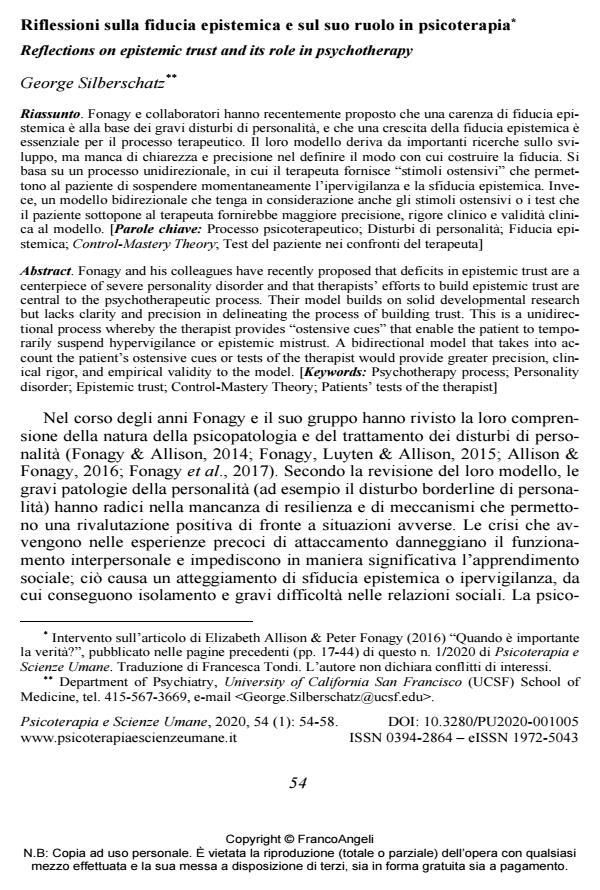Reflections on epistemic trust and its role in psychotherapy
Journal title PSICOTERAPIA E SCIENZE UMANE
Author/s George Silberschatz
Publishing Year 2020 Issue 2020/1
Language Italian Pages 5 P. 54-58 File size 76 KB
DOI 10.3280/PU2020-001005
DOI is like a bar code for intellectual property: to have more infomation
click here
Below, you can see the article first page
If you want to buy this article in PDF format, you can do it, following the instructions to buy download credits

FrancoAngeli is member of Publishers International Linking Association, Inc (PILA), a not-for-profit association which run the CrossRef service enabling links to and from online scholarly content.
Fonagy and his colleagues have recently proposed that deficits in epistemic trust are a centerpiece of severe personality disorder and that therapists’ efforts to build epistemic trust are central to the psychotherapeutic process. Their model builds on solid developmental research but lacks clarity and precision in delineating the process of building trust. This is a unidirectional process whereby the therapist provides "ostensive cues that enable the patient to temporarily suspend hypervigi-lance or epistemic mistrust. A bidirectional model that takes into account the patient’s ostensive cues or tests of the therapist would provide greater precision, clinical rigor, and empirical validity to the model.
Keywords: Psychotherapy process; Personality disorder; Epistemic trust; Control-Mastery Theory; Patients’ tests of the therapist
- Risposta agli interventi di Morris N. Eagle, Mauro Fornaro e George Silberschatz Elisabeth Allison, Peter Fonagy, in PSICOTERAPIA E SCIENZE UMANE 1/2020 pp.59
DOI: 10.3280/PU2020-001006 - Online psychological support in the COVID‐19 era: Social representations, trust and perceived effectiveness from the perspectives of clients and professionals Elisa Colì, Loredana Gavrila, Dacia Cozzo, Rino Falcone, in Counselling and Psychotherapy Research /2024 pp.1415
DOI: 10.1002/capr.12779
George Silberschatz, Riflessioni sulla fiducia epistemica e sul suo ruolo in psicoterapia in "PSICOTERAPIA E SCIENZE UMANE" 1/2020, pp 54-58, DOI: 10.3280/PU2020-001005